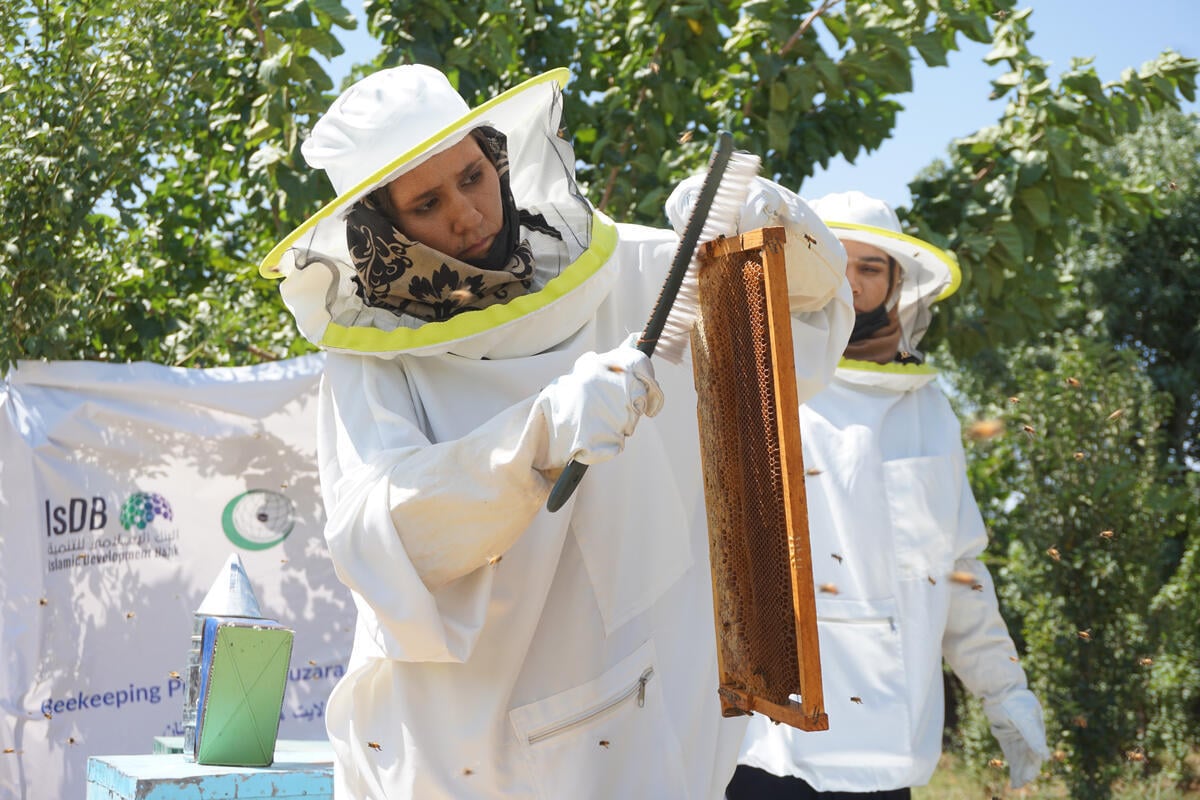UNHCR says it is preparing for a large-scale voluntary return of Afghan refugees in Iran
UNHCR says it is preparing for a large-scale voluntary return of Afghan refugees in Iran

TEHERAN, Nov. 20 (UNHCR) - The United Nations High Commissioner for Refugees said Tuesday it was gearing up for what it called a possible large-scale, organised return this Spring of Afghan refugees now in Iran, and agency officials met with government authorities to prepare a contingency plan.
The refugee agency said that if security conditions permit, organised returns could begin next Spring. There are currently 2.3 million Afghan refugees in the country, according to Iranian government figures.
"I would hope that with the return of peace and stability in Afghanistan, we would see large numbers of people go back, but we have to create the conditions for them to do so," Ron Redmond, UNHCR's spokesman, said in response to a question at a news briefing in Geneva.
"We can't predict how many would go back," he added.
Afghans have been voluntarily returning to Afghanistan from Iran on a steady basis for numerous weeks. On Monday UNHCR said some 12,000 people have gone home since the beginning of the month, and it predicted that the total for November would be greater than October's figure of 15,000 returnees.
By mid-morning Tuesday 18 buses carrying 800 returnees had arrived in Dogharoun, Iran's main north-east border crossing. Those returning told UNHCR that they were encouraged to go back home because of developments, meaning the fall of the Taliban, in the city of Herat and other areas of north-west Afghanistan. Most of those returning are Tajiks, Uzbeks, and Hazaras.
"Many of the returnees continue to be young men who had fled to Iran during Taliban rule to escape forced conscription," Redmond said.
Refugee agency staff members reported earlier this week that there was a more relaxed atmosphere among the Afghans going home through Dogharoun. Some of the men wore jeans for the crossing and many have cut their beards. The women, while sporting the long coat and head-dress known as the Chador, no longer wear the Burka imposed on them by the Taliban.
In another development, Iranian authorities gave permission Tuesday for the departure of an aid convoy from the north-eastern Iranian town of Mashad to Herat. The convoy, the first to be jointly organised by UNHCR and the Iranian Red Crescent Society since the withdrawal of aid agencies from Afghanistan in September, is expected to reach Taybad near the Iranian border before going to Herat on Wednesday.
The 15-truck convoy is carrying 2,000 plastic tarpaulins and 10,000 blankets from UNHCR for more than 12,000 people in the displaced persons camp in Herat.
In southern Pakistan, meanwhile, the transfer of Afghans from the Killi Faizo staging site to the Roghani camp was temporarily interrupted Monday when local men, apparently to protest the settlement of refugees in their tribal land, dismantled 70 tents. Local authorities intervened, however, and the transfers resumed Tuesday.
Nevertheless, 251 Afghans were transferred to Roghani Monday, bringing to 4,307 the total number of people at the camp. In addition, 539 persons were registered at the Killi Faizo site.
UNHCR reported that there has been very little commercial traffic in the last two days at the Chaman border crossing point near Killi Faizo, the main route from southern Pakistan to the Taliban-controlled city of Kandahar. Only ten trucks carrying wheat flour were seen entering Afghanistan yesterday at Chaman.








